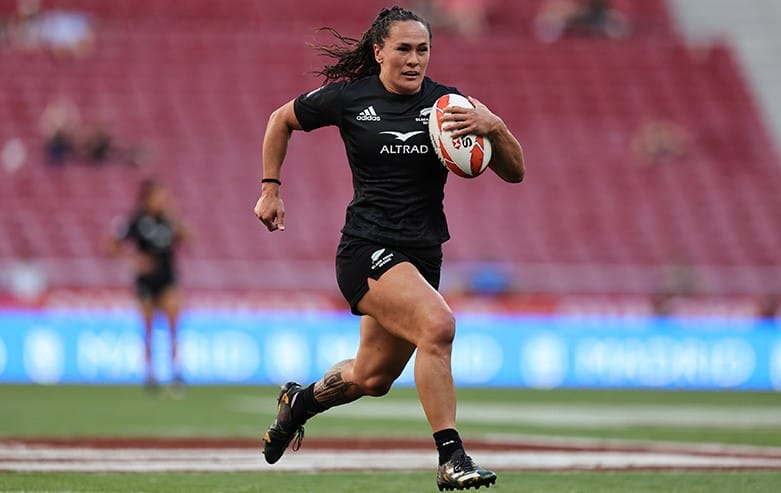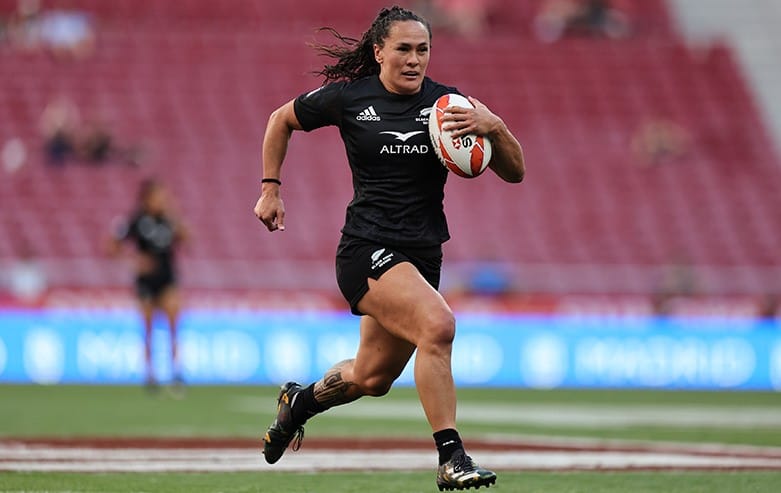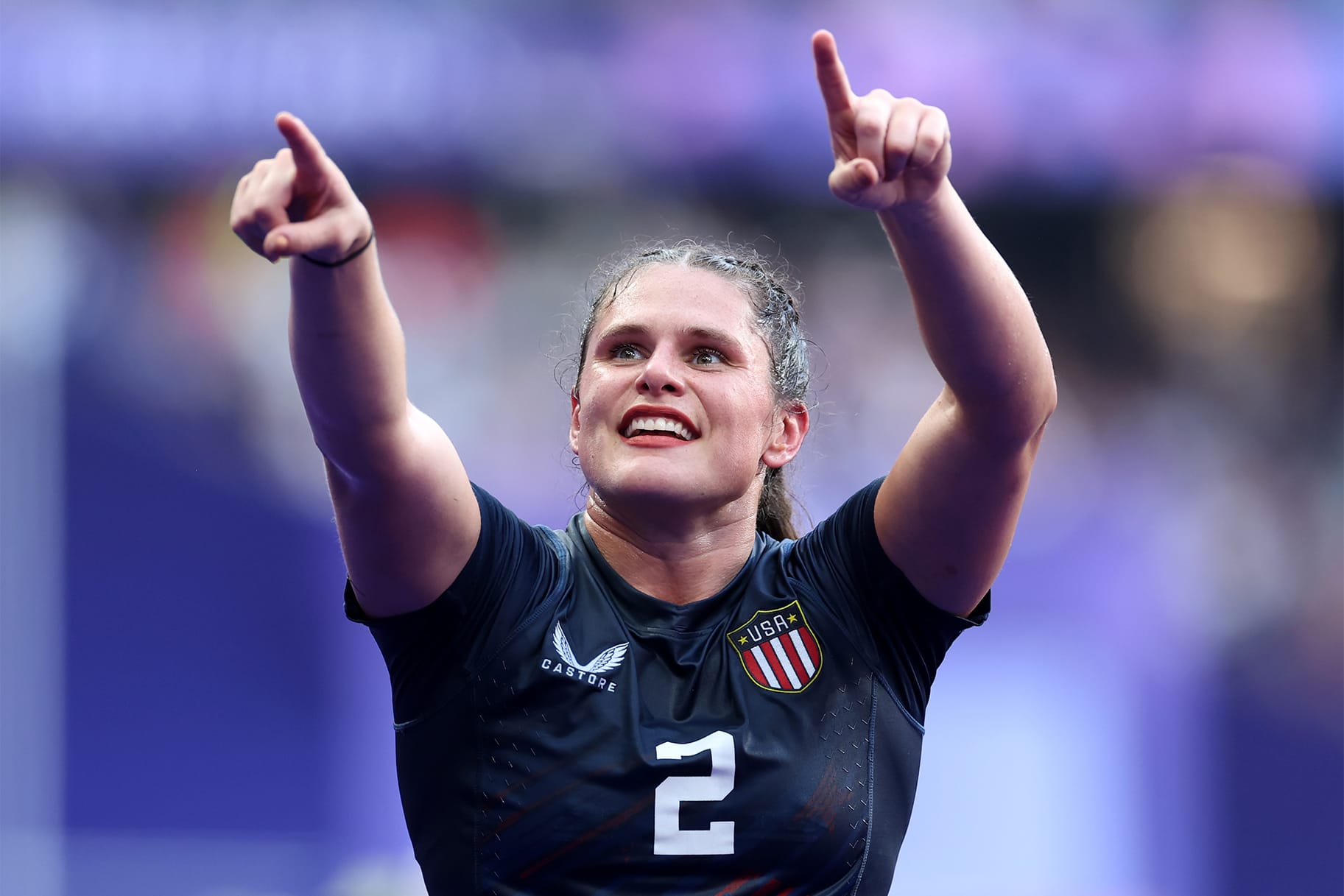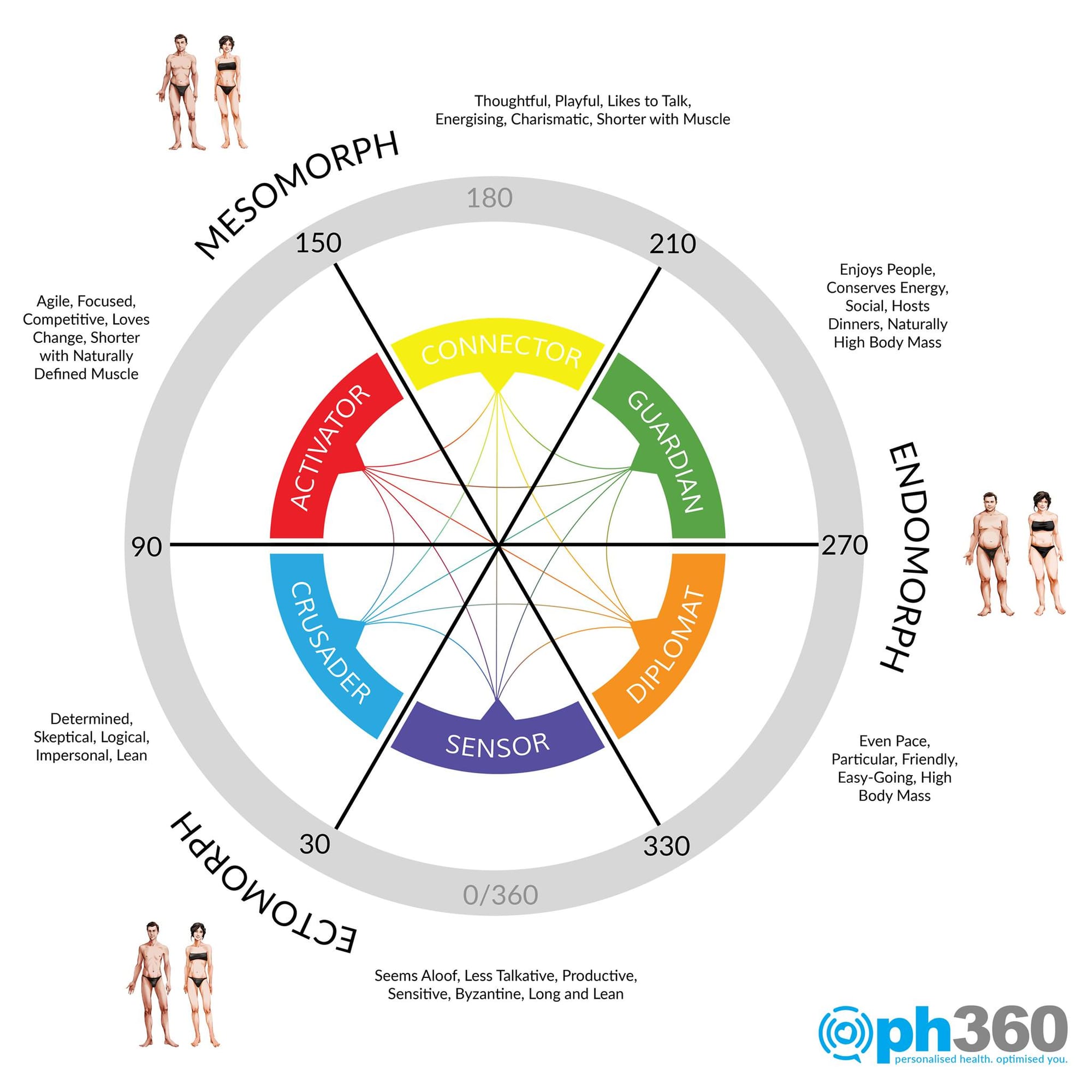Strong Looks Good

Happy Saturday fam! Megan here, from the rainy UK. Let’s talk about muscles.
I grew up around sport. My dad coached basketball. My mum played, and so did both my brother and I. Family trips were built around tournaments, the races, the beach. We played backyard cricket, and I even briefly tried trampolining as a sport, because the trampoline I got for Christmas was just that much fun.
The women athletes I looked up to were tall and “toned.” Fast and lean, cardio machines. The ones I remember most clearly are tennis players — Martina and Steffi. They were all sinew and speed. What I never saw were women who looked like they could squat a small car. I don’t remember women who were built like the proverbial brick shithouses.
Now I’m in the UK following the Women’s Rugby World Cup. At the first game I attended - England v Australia - I got a little teary listening to 30,000 people roaring for women’s sport, let alone women’s rugby. But the bit that really got me? Not just the haka: these women are strong.

On the field, you can see it: the muscle in their thighs, their broad shoulders, their flexed biceps. You know they lift. You know they eat. You know they train hard enough to take hits and then still run the length of the field in seconds.
Women’s strength isn’t new. We were farm labourers, warrior queens, goddesses. But somewhere along the way - and not that long ago - the only kind of fitness worth celebrating became the kind that looks like thinness. That’s not a dig at women who are naturally lean - it’s just naming the way we’ve been taught to celebrate only one body type, when strength and athleticism come in many shapes.
I’ve been called “built like a brick shithouse” before, and it wasn’t meant kindly. But I’m stoked that a whole generation of girls is growing up with these women as their idols.

I remember competing in shot put at the school athletics day and being good enough to go to regionals. But the vibe was more “she’s a fat kid, of course she’s good at that” than “this is talent, let’s coach it.” No one thought to see whatever innate strength I had as potential.
Imagine if I had known then what I know now: that my body was never meant to be thin, it was meant to be strong. It’s good at building, keeping, and using muscle. Imagine if someone had said, “Hey, you’d be brilliant at this. Let’s build those muscles.” My life - my health - could have looked very different.
I’m glad I found my muscles in my forties. I’ll always wish that decades of beauty and fitness culture hadn’t kept me away from them. But finding them now means I appreciate them in a way I couldn’t have as a teenager. I know what it feels like to live without them.
And right now? I’m grateful for them every time I have to haul a 21kg suitcase onto a train, or sprint up three flights of rickety stairs to find the pub bathroom.
I’m glad women are finally seeing strong versions of themselves on big international stages. (Although, from what I can tell, there’s next to no coverage of the Black Ferns in New Zealand - which makes me furious enough to start drafting strongly worded letters to editors. We might be filling stadiums but not the sports section.)
Imagine what that might mean for those little girls I saw in the stadium last weekend - how powerful they might end up being. And how that power could be celebrated.
So, Carl, what do you reckon? You’ve been in the industry a while, and you’re a dad of daughters. Is the tide turning? And what do I need to do to look like I could cut it as a prop in a master's team?
Carl here
Megan, I think this is such an important topic and one I’m grateful to weigh in on. Being a father of two girls and having supported so many women in their health and performance journeys, I’ve seen firsthand how attitudes around female bodies and training have been shifting, though not without challenges.
So is it changing? I’d say yes… and no. I know, I live in the grey, and it even annoys me sometimes! Let me explain.
On the positive side, I’m seeing more and more women coming to train with the goal of getting stronger and more capable, rather than just chasing aesthetics. Historically, this was rare, most female clients wanted to look thin or “toned.” I absolutely love this shift. Research supports that appearance-focused goals often predict poorer body satisfaction and a higher risk of disordered eating. On the other hand, performance-based goals are linked with greater persistence, enjoyment, and healthier self-perceptions. Unlike aesthetics, strength gains are almost guaranteed with good programming, and they can be celebrated across so many domains: sport, gym, and everyday life.
I’m also noticing a cultural change where muscular women are being celebrated more openly, both by men and women. Unlike someone who may be naturally very thin (which is perfectly fine too), visible strength and muscle usually represent years of consistent effort. That visibility makes it easier for others to recognise and value the hard work behind the physique, which is powerful.
But the “no” part comes from reality checks. Despite progress, the pressure of body stereotypes for women is still everywhere. As a dad of two daughters, I feel like I’m constantly countering a bombardment of messages, both subtle and explicit, that suggest women’s worth is tied to how they look. Research consistently shows that women‘s bodies are judged more harshly than men’s, and that media exposure fuels unrealistic ideals which can undermine self-esteem.
I also think it’s important to acknowledge how strange and unfair it is that society tends to worship just one body type (though thankfully this is starting to shift, yay!). The reality is that many different body types are both healthy and highly capable. Take a rugby team, for example: each position requires a different build. A muscular, powerful prop is built to move heavy bodies, while a leaner, more agile halfback is designed to move quickly around them. Both are essential, both are impressive.
Years ago, I qualified in an epigenetics course, where we studied how genes and the environment around us interact to shape the way our bodies express themselves. That experience really highlighted to me how different we can be physically and genetically, how we all have unique strengths and natural abilities, and even how our nutritional needs can vary.

Here is a free and really simplified version of the full test, not super accurate, but it's kinda fun!
That’s why I think it’s crucial for me as a man, as a father, and as someone who cares deeply about wellbeing, to be conscious of the language I use, and the judgments I might unintentionally reinforce. If we can highlight strength, capability, and health as the real markers of progress, then we can help shift the focus for the next generation.
So yeah, you could totally be a very strong a capable masters prop, Megan. You have a great base of strength and power. Are you willing to commit to cauliflower ears? If so, let's do it!
And what the heck is going on with the Black Ferns?! You wouldn't even know it's on in NZ. Not cool.
Here are some things to possibly consider if you’re reading this:
For women:
- Celebrate all body types - look at various Olympic sports, all are incredible and elite, but so many different body types, and that's amazing!
- Set performance-based goals – consider to aim to lift heavier, run faster, or master a new skill. These are measurable, satisfying, and build confidence beyond appearance.
- Curate your feed – Follow accounts and communities that celebrate strength, health, and diversity in bodies, rather than unrealistic ideals.
- Celebrate milestones – Reward yourself for consistency, progress, and effort, not just outcomes.
For men (and dads, partners, coaches, or friends):
- Be mindful of language – Compliment all body types, strength, capability, and effort too.
- Challenge stereotypes – Speak up when you hear body-shaming or appearance-based judgments.
- Model respect – Show young people (especially daughters) that you value health and ability over appearance.
- Support women’s goals – Whether it’s watching the black ferns, hitting a PB, joining a sport, or starting strength training, encourage and celebrate the journey.
